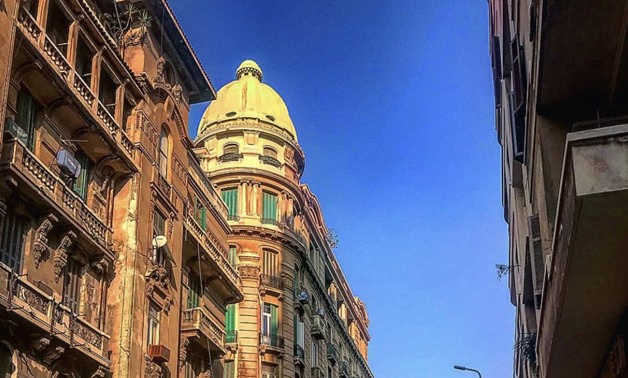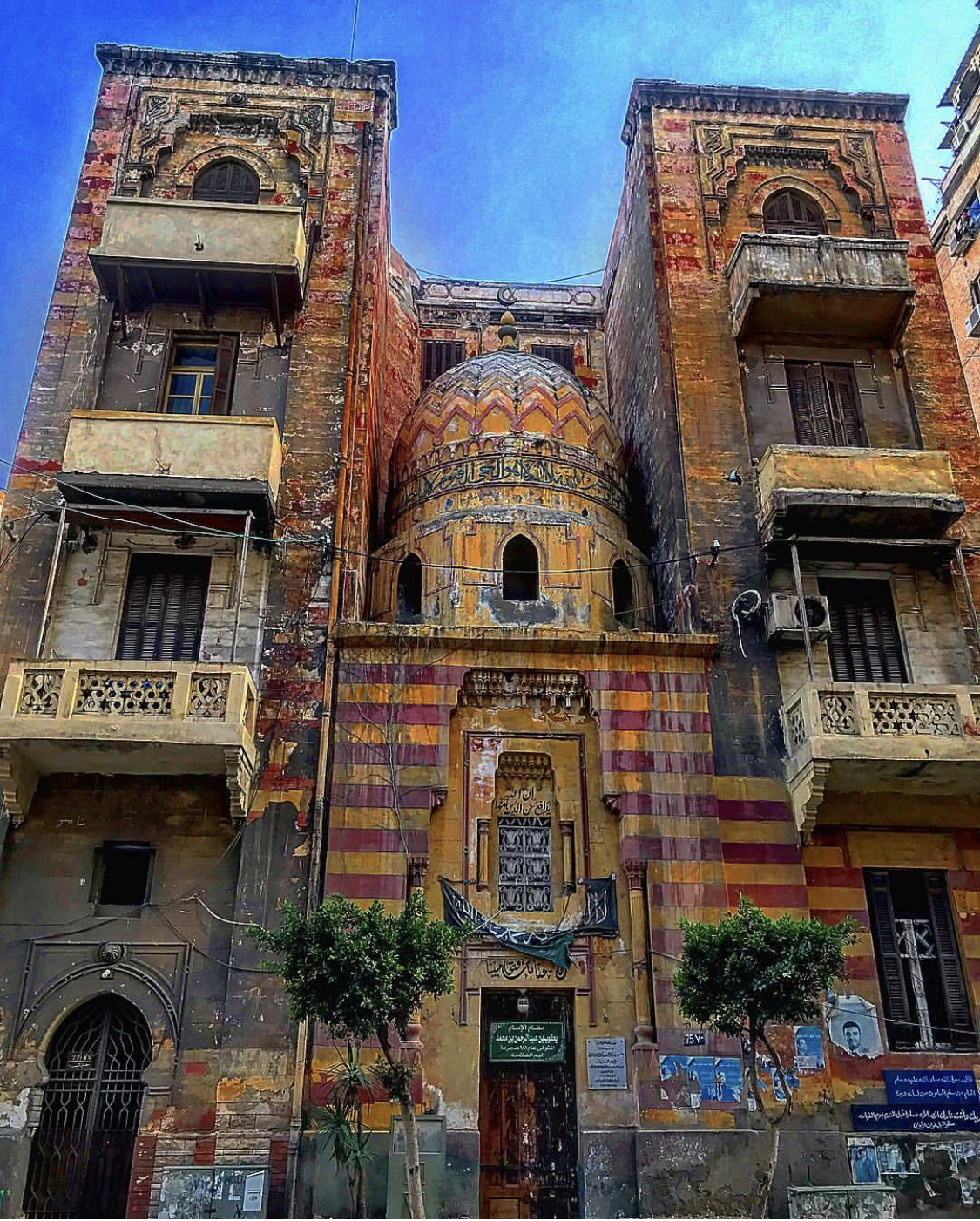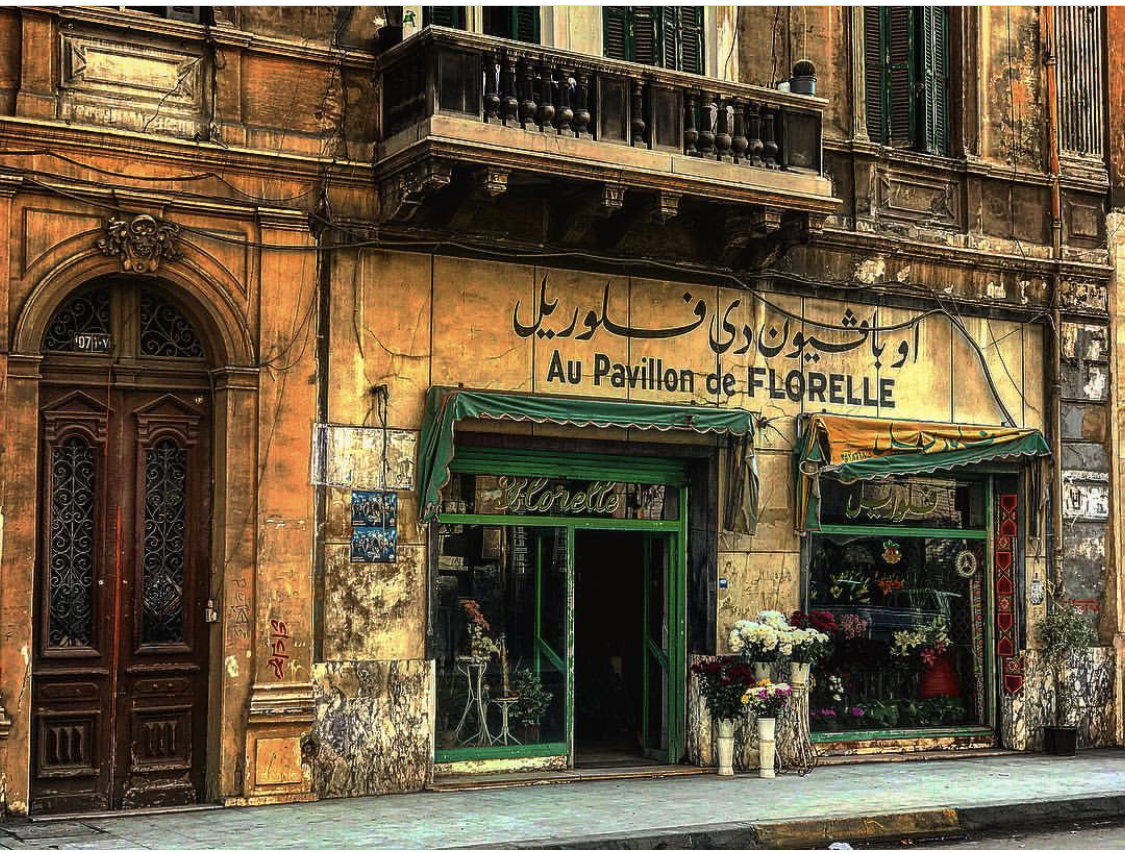
Photography by Mohamed El Sayed
Dubbed the “Sun Gate” and the “King’s Road’, Fouad Street is located in the heart of the coastal city of Alexandria. Considered one of the few remaining streets that still hold an air of the past, the thoroughfare also known as El Horreya was first established in the Ptolemaic era and was built in a peculiar mix of Roman, Greek, Italian and French styles by Greek Architect Dimokratis in 400 AD. Most of the buildings still standing today retain their European elements.
Begin your walk at Qesm El-Attareen (Police Station), which held the headquarters of the British garrison during Mohamed Ali Pacha’s era. Right next to it is one of the greatest buildings of the street, the Alexandria Arts Center, which was originally established as the Muhammad Ali Club, the meeting point of the city’s cultural elite, with previous members including the likes of novelist E.M. Forster, British writer Lawrence Durrell and Greek Poet Constantine Cavafy. At the other end of the road is the Zohour (Flowers) Clock right across Shallalat (Waterfall) Gardens, home to the remains of Alexandria’s Arabian Walls. The latter were designed as an outdoor wall and indoor hidden wall surrounding the city from the east harbor (Mansheya Square today).
Fouad Street intersects with three main roads: Sherif Pacha (Salah Salem); Istanbul, which extends to Sultan Hussein named after Khedive Ismail’s son Sultan Hussein Kamel
(1853-1917), and El-Nabi Daniel, which some believe was named after Muhammad Daniel Al-Mosuli, an Islamic scholar who travelled from Mosul to Alexandria in the 14th century, and was buried in a mosque in the same location. Popular landmarks in the area include El-Nabi Daniel mosque, Eliyahu Hanavi Synagogue and Saint Mark’s Coptic Orthodox Cathedral.

Photography by Mohamed El Sayed
Fouad Street played a significant role in the planning of Alexandria, connecting the whole city together. In the Roman era, the street had an eastern gate (The Sun Gate) and a western one (The Moon). It was named Bab Rashid toward the end of the 19th century, as it was the main road linking Alexandria with Rashid City. The street was eventually named after King Fouad (1917-1926) in 1920. After the 1952 revolt, the name was changed to El Horreya, then to Gamal Abdel Nasser after the late president’s death. However, Alexandrians still know it by Fouad Street. Today, it remains a European-style thoroughfare, as many residents call it, and it holds a great deal of the city’s past glory with its quaint houses and aura of mystery. It was also home to a number of notable landmarks, most of which are unfortunately gone and can only be found in drawings and photos, such as the Mohammed Ali Pasha Club (now the Alex Art Center), Zezenia Theatre and the Khedive’s Hotel.
Cavafy, a Greek poet who resided in Alexandria and was the first Alexandrian scholar to have his works published in international journals, lived on Fouad Street most of his life until he passed away in the 1930s. His house, which overlooks Nabi Daniel street from one side and Fouad Street from the other, was turned into a museum in 1992.
Other landmarks on Fouad Street include the Alexandria Water Company. In 1857, Egyptian President Mohamed Said Pasha granted French engineer Cordier the privilege of providing Alexandria with pure water, so he established the National Water Company of Alexandria, continuing its franchise until 1867. Khedive Ismail bought it and sold it to the government, and the company was in charge of producing large pipelines from Wabour El-Maya tanks in Kom El-Dikka to the whole city.
As part of the Latin neighborhood, Fouad Street includes a number of uniquely designed buildings, particularly those built by Italian Architect Philip Beni in 1880 at the request of Khedive Ismail. Some of them remain today, including Balqees School, the Health Affairs Directorate and the Spanish Culture Center, all three of which were originally built as palaces in 1880.
 Photography by Mohamed El Sayed
Photography by Mohamed El Sayed
Screening the first cinema show ever in Egypt at Tosson Pacha Hall in 1896, Fouad Street boasts a number of old cinemas such as the Metro, Plaza, Royal and Rio (the latter was once a ful and falafel restaurant owned a Turkish resident). Other landmarks include the Alexandria Cotton Company and the renowned Alexandria Opera House, built by English architect George Park and first named as Muhammed Ali Teatro, before the name later changed to Sayed Darwish Theater (1962).
Sadly, like many streets around Alexandria, several villas and buildings on Fouad Street have been demolished to make way for new ones; without the slightest heed to the unique architectural design and heritage of the buildings that date back more than a century ago, or to the street as a whole. Nevertheless, Fouad Street remains the “Heart of Alexandria” with its nostalgic atmosphere and exceptional style that takes us instantly back in time; one can almost catch glimpses of women dressed in elegant dresses walking gracefully by, the men donning neatly tailored suits and greeting each other with the word “Saeeda”—have a happy day.

 Photography by Mohamed El Sayed
Photography by Mohamed El Sayed
Comments
Leave a Comment